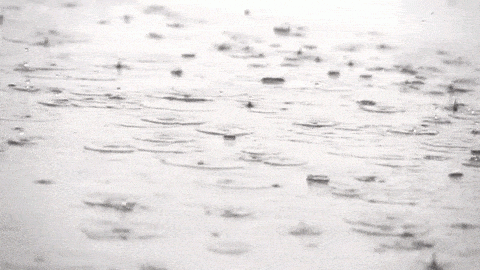(via Https://www.youtube.com/watch?v=QvmFhcGCRzA)
(via https://www.youtube.com/watch?v=QvmFhcGCRzA)
More Posts from Nisiablog and Others


The triskellion is my favorite symbol. I doodle them everywhere.
https://twitter.com/AstroSamantha/status/554805032940765184?s=09
Check out @AstroSamantha's Tweet:

The simple coalescence of a drop with a pool is more complicated than the human eye can capture. Fortunately, we have high-speed cameras. Here a droplet coalesces by what is known as the coalescence cascade. Because it has been dropped with very little momentum, the droplet will initially bounce, then seem to settle like a bead on the surface. A tiny film of air separates the drop and the pool at this point. When that air drains away, the drop contacts the pool and part–but not all!–of it coalesces. Surface tension snaps the remainder into a smaller droplet which follows the same pattern: bounce, settle, drain, partially coalesce. This continues until the remaining droplet is so small that it can be coalesced completely. (Image credit: Laboratory of Porous Media and Thermophysical Properties, source video)

#thekilling #holder #joelkinnaman #holderisms @TheKillingonAMC


"There’s nothing holy anymore, nothing sane nor sensible. The world’s turned bad, and so have I." (Electra)
“I ask you again / You who watch / How can there ever be any ending but this? First silence / Then darkness.” (Medea)
Electra with Kristin Scott Thomas and Medea with Helen McCrory are the best stage productions I’ve ever seen. So powerful, moving and heartbreaking. I adore British actresses.
As dangerous as explosions are in air, they are even more destructive in water. Because air is a compressible fluid, some part of an explosion’s energy is directed into air compression. Water, on the other hand, is incompressible, which makes it an excellent conductor of shock waves. In the video above we see some simple underwater explosions using water bottles filled with dry ice or liquid nitrogen. The explosions pulsate after detonation due to the interplay between the expanding gases and the surrounding water. When the gases expand too quickly, the water pressure is able to compress the gases back down. When the water pushes too far, the gases re-expand and the cycle repeats until the explosion’s energy is expended. This pulsating change in pressure is part of what makes underwater explosions so dangerous, especially to humans. Note in the video how the balloons ripple and distort due to the changing pressure. Those same changes in pressure can cause major internal damage to people. (Video credit: The Backyard Scientist; submitted by logicalamaze)
Suicide, a Crime of Loneliness

Andrew Solomon on Robin Williams:
“He played an alien so well because he was an alien in his own mind, permanently auditioning to be one of us. Suicide is a crime of loneliness, and adulated people can be frighteningly alone. Intelligence does not help in these circumstances; brilliance is almost always profoundly isolating.”
Above: Robin Williams, September 14, 1978. Photograph by Jim Britt/Getty


Watching rain drops hit a puddle or lake is remarkably fascinating. Each drop creates a little cavity in the water surface when it impacts. Large, energetic drops will create a crown-shaped splash, like the ones in the upper animation. When the cavity below the surface collapses, the water rebounds into a pillar known as a Worthington jet. Look carefully and you’ll see some of those jets are energetic enough to produce a little satellite droplet that falls back and coalesces. Altogether it’s a beautifully complex process to watch happen over and over again. (Image credit: K. Weiner, source)
——————
Help us do some science! I’ve teamed up with researcher Paige Brown Jarreau to create a survey of FYFD readers. By participating, you’ll be helping me improve FYFD and contributing to novel academic research on the readers of science blogs. It should only take 10-15 minutes to complete. You can find the survey here.